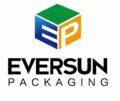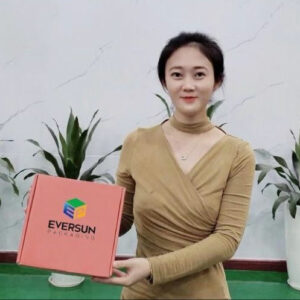Cardboard display is a kind of paper product, which is made of cardboard.
People usually can see cardboard displays in major supermarkets, shopping malls, and some large-scale events and exhibitions. Cardboard displays are suitable for brand manufacturers as an application commonly used in promotional activities. Whether it is a new product launch, a holiday promotion, or a product display, cardboard displays can help achieve a relatively good display effect. The use of paper display stands is of great help to enhance the brand image of products in the store, create a festive atmosphere, and drive product sales. But how to make a cardboard display? Let’s explore what is the production process of cardboard displays.
Cardboard Display Design
Design a suitable cardboard displays according to the size specified in the store or supermarket. Each store or supermarket has its own management regulations, which should be known before design. Otherwise, the manufactured cardboard displays will not be allowed to enter the market for use in an oversized range, and if it is too small, it will not achieve the ideal display effect. Another important point is that it is necessary to design according to the “number of products” and the number of layers on the premise of the specified size range. If there is no product packaging size, the designed displays may be too big, which wastes space, and the display effect is not ideal. If it is too small, the product will not fit.
Sampling
According to the planned size of the cardboard displays, the designer will dissect the various components of the CAD software, and send the design line drawing to the proofing machine for cutting. It is worth noting that when cutting, pay attention to the size of the cardboard. The cutting can only be performed after layouting well according ti the size. Assemble the cut out single pieces of cardboard in sequence, and then place the product to see if it fits. If the effect is not what was originally designed, you can modify it and repeat the action you just did.
Artwork Design
According to the first draft of the layout plan, arrange its text, photos, correct color marking, etc. to process the complete manuscript in the form of electronic manuscript, and clearly indicate the special requirements for the artwork.
Proofreading
In order to avoid printing less than desired results and incurring huge expenses, test the effect of color before printing in large quantities. It is necessary to normally produce a smaller color sample to check whether the design file and color are correct. Check whether the color proofing conforms to the procedure indicated on the finished manuscript. When color correction and other corrections are made, it is necessary to write specific and easy-to-understand text descriptions or position outlines with red pen to correctly convey them to the plate making personnel, so as to avoid any loss.
CTP
The CTP process is extremely important, because this process directly affects the integrity of the product, and the current technology has also improved a lot. Most manufacturers use digital machine plate making, which generally requires plate burning, plate processing, and plate revision processes. Usually in addition to several basic colors of CMYK, there are also several spot colors, such as: gold, silver.
Printing
The exquisite pattern of the printing paper display rack needs to use the offset printing process, which can clearly restore the color, contrast and level of the original with high precision. It is the most common paper printing method at present.
There are many brands of printing machines. Although the brands are different, the printing principle is the same. The performance of various brands of machines is different, and the color effects produced are more or less biased. Commonly used are Heidelberg printing presses, Roland printing presses, KBA printing presses, etc. For different print sizes, select the corresponding maximum printable suitable equipment to complete the work.
There are roughly two ways to express the desired color of cardboard displays with printing ink:
(1)CMYK Printing, mixing dots and overlapping overprinting to make the desired color tone;
(2) Spot Color Printing, use spot color printing, and express color with solid color or dot.
The two methods are different in printing design, color designation or plate-making method. In principle, CMYK printing uses four basic colors-YELLOW, MAGENTA, CYAN and BLACK-to overprint and produce ever-changing colors. Therefore, color prints can faithfully reproduce the tone of color photos by color separation and four-color overlapping reduction. However, some special colors, such as gold, silver and fluorescent colors, cannot be overprinted by the basic four-color ink, but must be printed by spot-color ink.
In monochrome prints, different dots can be used to make different shades of gray tones (halftones) to express the image levels. The expressive power of multi-color printing is better than that of single color, but the rational effect can be obtained only by proper application and designation. When designing, we should look for some standard color overprinting guidelines as a reference, and make use of appropriate dots to increase the color change.
The ink color on printing can be expressed by the dot ratio of each basic color in the “four-color mixing table”. However, different types of inks, media, printing methods and production equipment may print different “four-color mixing tables”, so there needs to be a standardized and professional method to formulate a set of “four-color mixing tables” or “color scales” As a recognized reference standard so that everyone can communicate the ink color of printing accurately through a unified color language.
Post-press Process
The post-press processing technology of printed matter mainly includes varnish, lamination, gold and silver printing, hot foil and so on.
Varnish is the process of coating a layer of colorless transparent paint on the surface of the printed matter. There are three forms of varnish: glossy varnish, matte varnish and UV varniash. The surface of the printed matter after varnish is bright and beautiful, which enhances the moisture resistance, light fastness, water resistance, abrasion resistance, and antifouling properties of the printed matter.
The lamination is a plastic film covering the surface of the printed matter. A layer of transparent plastic film is covered on the surface of the printed matter, which enhances the brightness of the printed surface, improves the wear resistance and the properties of waterproof, antifouling, light resistance and heat resistance.
Gold and silver printing is to use gold or silver ink to transfer gold or silver pictures and texts to printed matter through the printing process. Pictures and texts have golden or silver luster. The printed pictures and texts are shiny in gold (silver) and the decorative effect is very good. Gold and silver printing enhances the artistic effect of printing surface and improves the competitiveness of commodities.
Hot foil, also known as hot stamping and foil stamping, is to melt the adhesive by heating, and hot stamping metal foil or color film stamped onto the surface of paper or other materials to form a special decorative effect.
Paper Laminated
Laminating the printed sheets (facial paper) with the corrugated board is called paper laminated process. There are several notable points in this process: it is necessary to align the positions of the corners and lines, unify the positions and then facilitate the later cross-cutting molding process to avoid the incomplete cut product patterns.
Second, the laminated cardboard needs to be placed in the whole and pressed well to cause paper warping. A good adhesive product is that the base paper and the face paper are immersed into a mixture.
Die-cutting
Die cutting is a very important part of the production process. Die cutting must be accurate so as not to affect the subsequent work. After the face paper and the corrugated board are laminated, they need to be die-cut with a die-cutting machine to get the effect you want. The working principle is to press up and down and keep the balance, place the line drawing die on the machine, and place the tool down. The cardboard can be cut by closing it down when the machine is running.
It is worth noting that the cutting die is very important, because if the cutting die is not right for you to design the file, it will also greatly affect the finished product. Therefore, when making cutting die, it is generally best to take the printed product to the cutting die master.
Assembly
According to the modeling structure, all accessories must be assembled organically from the outside to the inside. Accessories such as hooks are the last to be installed. In this assembly step, manufacturers usually provide graphic assembly instructions, which is convenient for store personnel who don’t know the process to assemble the finished products. Some merchants require that the products be directly assembled and the products are put on in the factory warehouse to be shipped together.
Quality Inspection
All finished products are inspected by the experienced quality inspection department. All unqualified products judged according to the product quality inspection standards will be reworked in view of poor printing quality, such as insufficient printing patterns, insufficient precision, serious uneven color deviation, inaccurate printing register, obvious glue marks on the surface, inaccurate bonding alignment, scratches, scars, dirt, deformation and damage. The quality control department will inform the production department to arrange rework. The quality control of the rework process is the responsibility of the production workshop and QC. Ensure that the product is finished in the buyer’s hand, is the product that the guests want, and meets the requirements of the preparation or order.
Finished Product Packaging
According to the export standards, the paper display racks are packed in boxes, so the outer boxes need to be well protected, safe, reliable, economical and beautiful. One or more packages should be packed according to the guests’ packing requirements, with assembly instructions, and the standard logo and related product information should be printed on the outer boxes.
To get more options, please visit our website: https://eversunpackaging.com/product-category/cardboard-displays/

